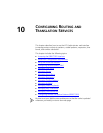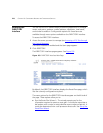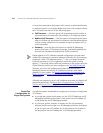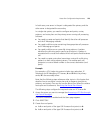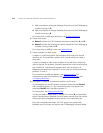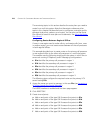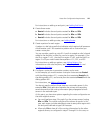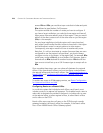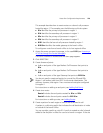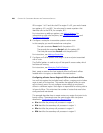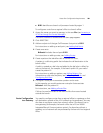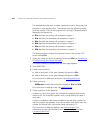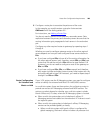
276 CHAPTER 10: CONFIGURING ROUTING AND TRANSLATION SERVICES
The remaining topics in this section describe the route plans you need to
create for a multi-site system. Note that these topics reference other
topics in this chapter that describe how to configure a route plan and its
elements (end points, patterns, and routes). You can also use the Route
Plan Wizard to create a route plan and its elements. See Using the Route
Plan Wizard.
Configuring Routes Between Regional Offices
If users in one region need to make calls to, and receive calls from, users
in another region, you must create routes between all the call processors
in both regional offices.
This example describes how to create routes on the primary call processor
in one regional office to the other call processors in a multi-site system.
The example uses the following simple multi-site system in which the six
servers are running IP Telephony and IP Messaging configurations:
■ R1a identifies the primary call processor in region 1.
■ R1b identifies the secondary call processor in region 1.
■ R2a identifies the primary call processor in region 2.
■ R2b identifies the secondary call processor in region 2.
■ R3a identifies the primary call processor in region 3.
■ R3b identifies the secondary call processor in region 3.
The following steps configure the required routes on the primary VCX
server hosting R1a:
1 Access the server you want to manage, in this case R1a (see A
ccessing a
VCX Site through the Central Manager).
The USERS interface is enabled and the Users page appears.
2 Click DIRECTORY.
3 Create six end points.
a Add an end point of the type Call Processor that points to R1a.
b Add an end point of the type Call Processor that points to R1b.
c Add an end point of the type Call Processor that points to R2a.
d Add an end point of the type Call Processor that points to R2b.
e Add an end point of the type Call Processor that points to R3a.
f Add an end point of the type Call Processor that points to R3b.




